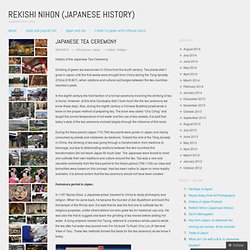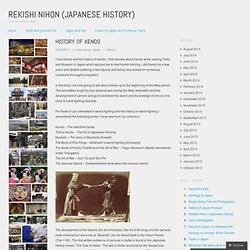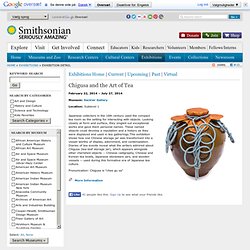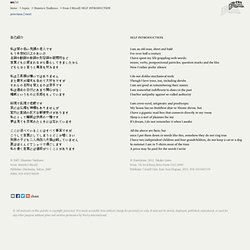

Règles de formation du corps des hatamoto (grands samouraïs du shogun) Samurai, Yokohama. Beato was one of the finest professional travel photographers of the nineteenth century.

He lived and worked in Japan from 1862 until about 1885, and dedicated himself to the comprehensive documentation of every aspect of the country, which had newly opened to the West. This straightforward but intense study of an anonymous samurai dates from early in Beato's period in Japan, and prior to the devastating fire that destroyed his studio and most of Yokohama in October 1866. After 1615, when relative peace reigned in Japan and the importance of martial arts declined, most sumurai-the top of Japan's social hierarchy during the Edo period (1603-1868)-became bureaucrats, teachers, or artists.
Just a few years after Beato made this photograph, the feudal period in Japan ended with the Meiji Restoration. And after more than eight centuries of military leadership, the sumurai class was officially abolished. Rekishi Nihon (Japanese history) History of the Japanese Tea Ceremony Drinking of green tea was known in China from the fourth century.

Tea plants didn’t grow in Japan until the first seeds were brought from China during the Tang dynasty (China 618-907), when relations and cultural exchanges between the two countries reached a peak. In the eighth century the first mention of a formal ceremony involving the drinking of tea is found. However, at this time it probably didn’t look much like the tea ceremony we know these days. Also, during the eighth century a Chinese Buddhist priest wrote a book on the proper method of preparing tea. Rekishi Nihon (Japanese history) I love Kendo and the history of Kendo.

I first learned about Kendo while reading Taiko and Musashi in Japan which spurred me to start Kendo training. I did Kendo for a few years and despite suffering a few injuries and being very scared on numerous occasions thoroughly enjoyed it. In this blog I am only going to talk about Kendo up to the beginning of the Meiji period. The last battles fought by true samurai was during the Meiji restoration and the development of cannon and guns rendered the sword and the prestige of one on one, hand to hand fighting obsolete. Chigusa and the Art of Tea. February 22, 2014 – July 27, 2014 Museum: Sackler Gallery Location: Sublevel 1 Japanese collectors in the 16th century used the compact tea room as the setting for interacting with objects.

Looking closely at form and surface, they singled out exceptional works and gave them personal names. These named objects could develop a reputation and a history as they were displayed and used in tea gatherings.This exhibition shows how one Chinese storage jar was transformed into a vessel worthy of display, adornment, and contemplation. Génèse et objectif du blog - Les têtards arboricoles.
Suite à l’arrêt des publications dans le blog du Krapo arboricole, qui avait pour but de collecter et d’échanger des informations sur les arbres vénérables, les principaux krapo-reporters ont décidés de se réunir pour continuer l’aventure.

La décision a donc été prise de donner une descendance au Krapo, sous la forme du blog des Têtards arboricoles. Précisons, que non content d’être simplement la progéniture du batracien cité précédemment, le têtard (ou trogne), est un aussi un arbre régulièrement étêté, afin de stimuler la repousse de branches. Espérons donc, que le retrait regrettable de Christophe, qui se trouvait à la tête du Krapo, produira lui aussi une repousse importante d’articles et de nouveaux reporters.
L’objectif des Têtards arboricoles est donc de recréer un espace d’échange et de découverte, autour des arbres vénérables, et de l’arbre en général. L’apport des différents contributeurs, d’horizons différents, permettra des approches diverses et variées de nos amis les arbres. Histoire navale japon. Japanese organic tea shop 自然栽培・自然農法・有機栽培・オーガニック・無農薬&無化学肥料のお茶専門店 Nara Japan 奈良 日本茶[TEANDCHA(テアンドチャ)] 庭園用語解説. From <em>I Myself</em>: SELF INTRODUCTION (poem) - Shuntaro Tanikawa - Japan. I am an old man, short and bald For over half a century I have spent my life grappling with words: nouns, verbs, postpositional particles, question marks and the like Now I rather prefer silence I do not dislike mechanical tools Though I love trees, too, including shrubs I am not good at remembering their names I am somewhat indifferent to dates in the past I harbor antipathy against so-called authority I am cross-eyed, astigmatic and presbyopic My house has no Buddhist altar or Shinto shrine, but I have a gigantic mail box that connects directly to my room Sleep is a sort of pleasure for me If I dream, I do not remember it when I awake All the above are facts, but once I put them down in words like this, somehow they do not ring true I have two independent children and four grandchildren, do not keep a cat or a dog In summer I am in T-shirts most of the time A price may be paid for the words I write.

Shell's Japanese name and Old Japanese books. Institut des Traditions du Japon /日本伝統協会 / Institute of Japanese Traditions / Nihon Dento Kyokai /Nihon Dento Reiki Paris - Page 15 - Institut des Traditions du Japon /日本伝統協会 / Institute of Japanese Traditions / Nihon Dento Kyokai /Nihon Dento Reiki Paris.
Acheter un Grand Casse-tête Japonais &quo.